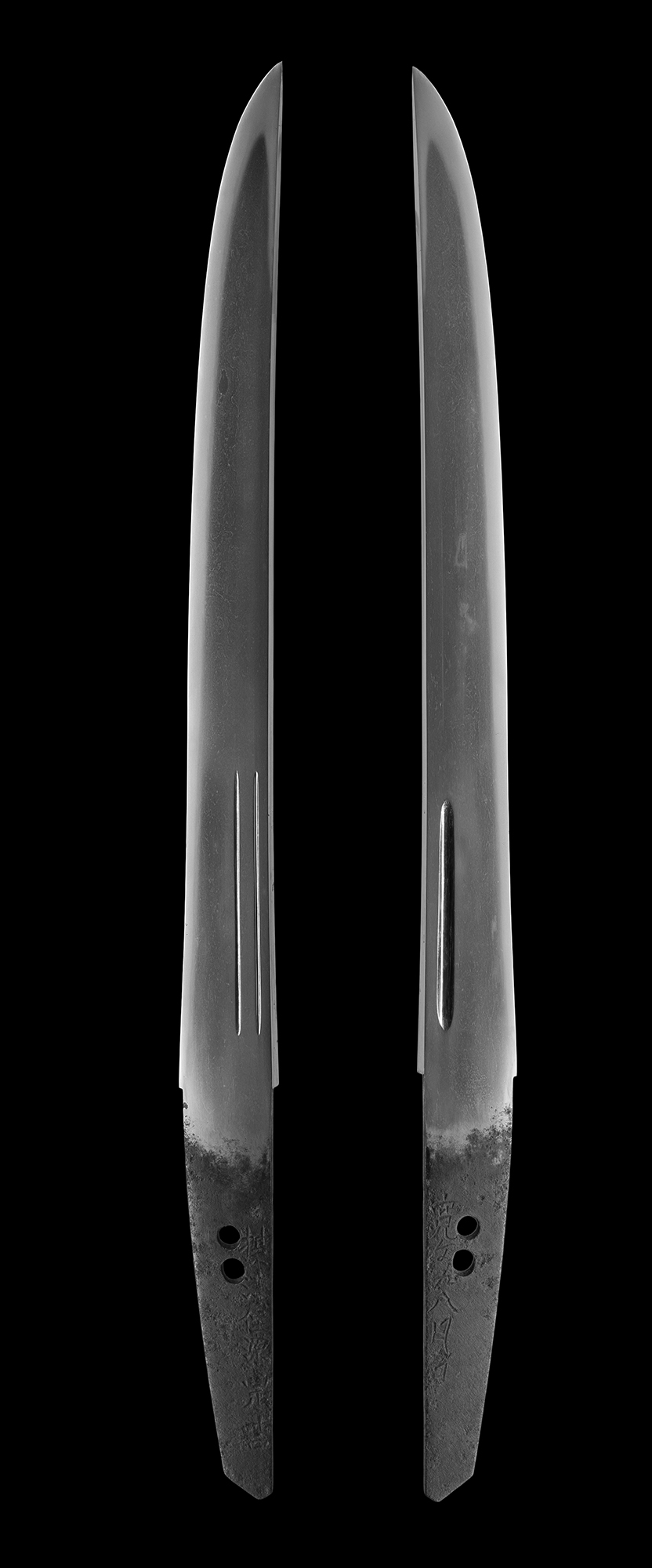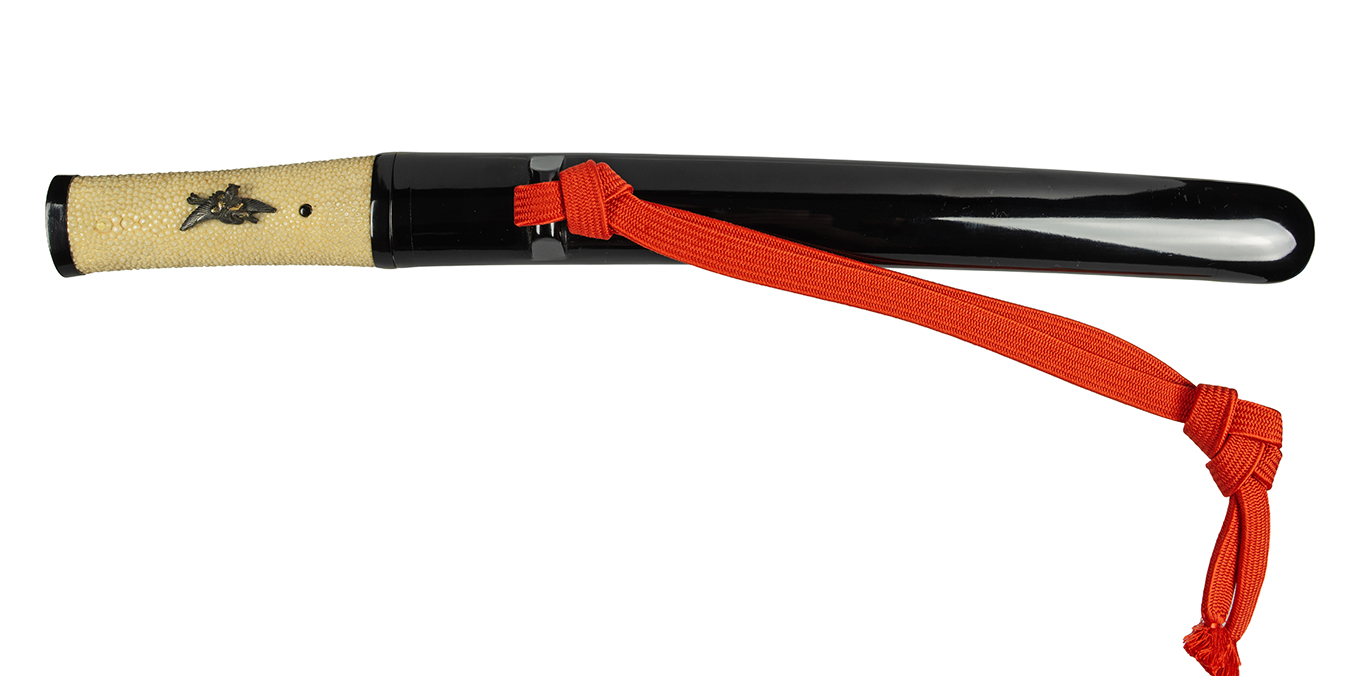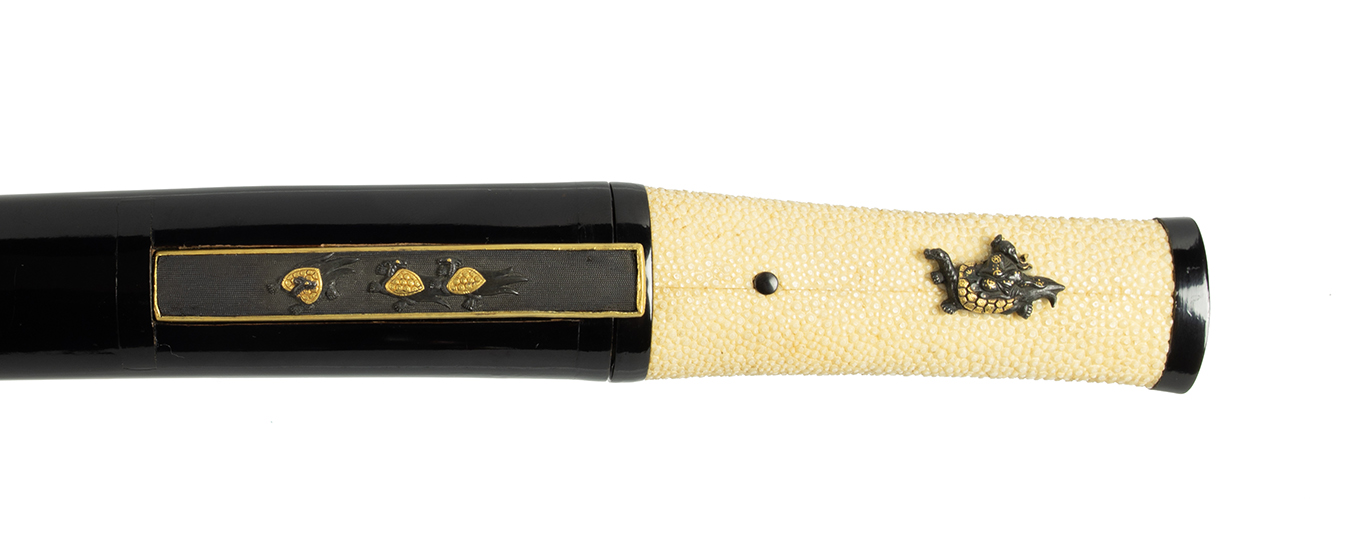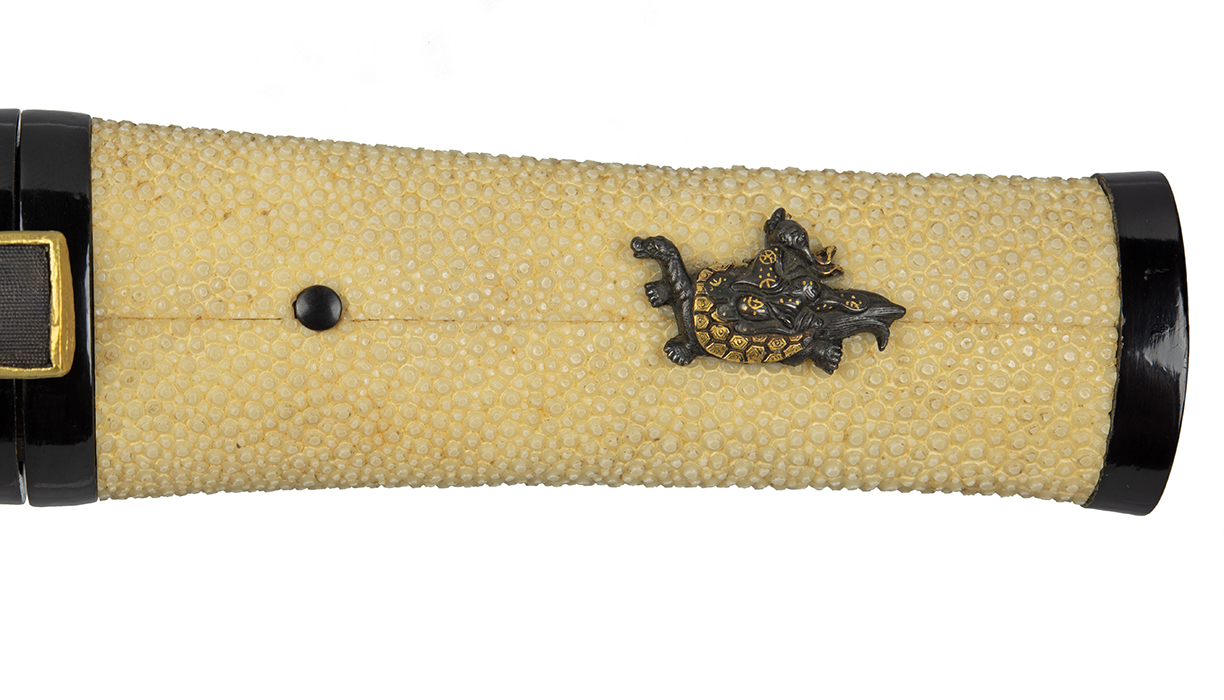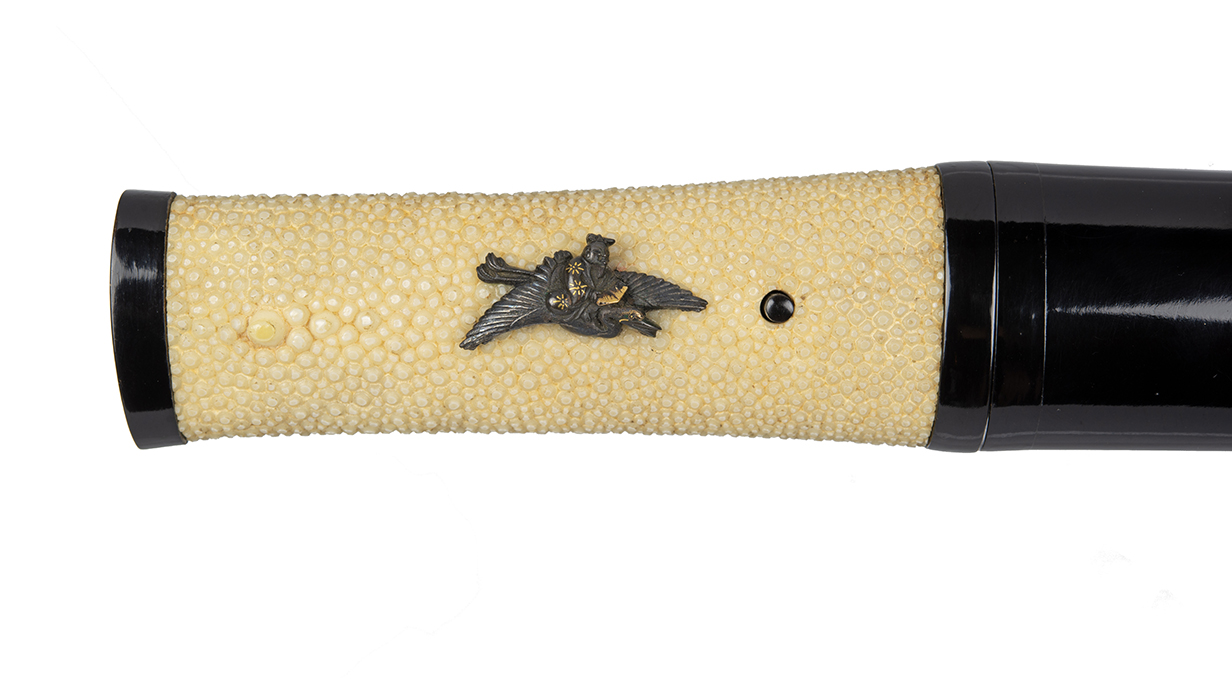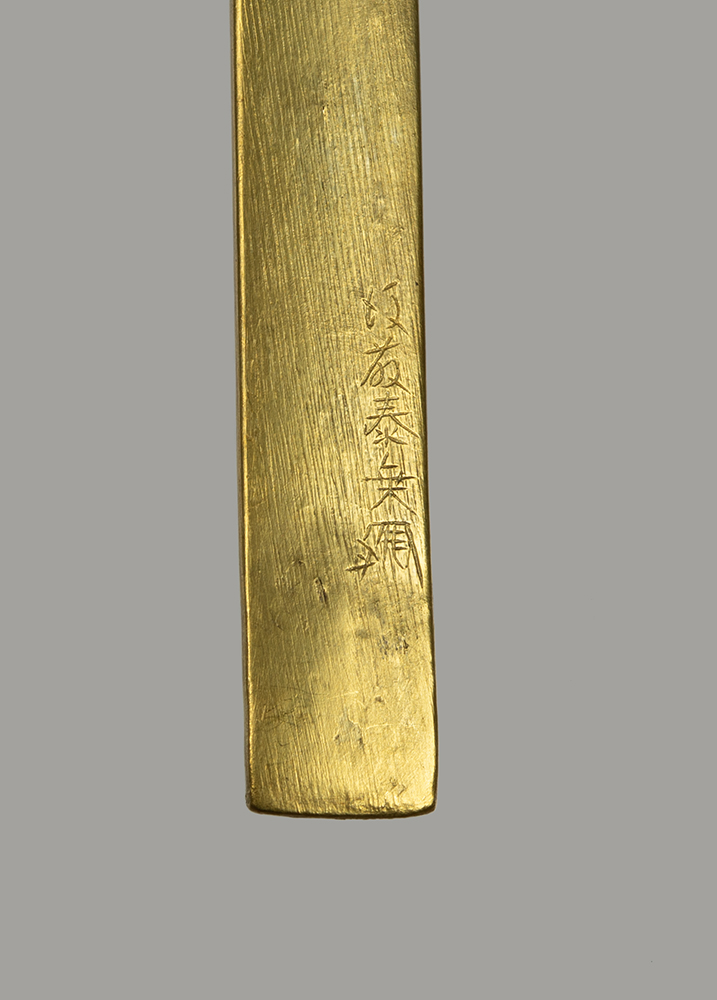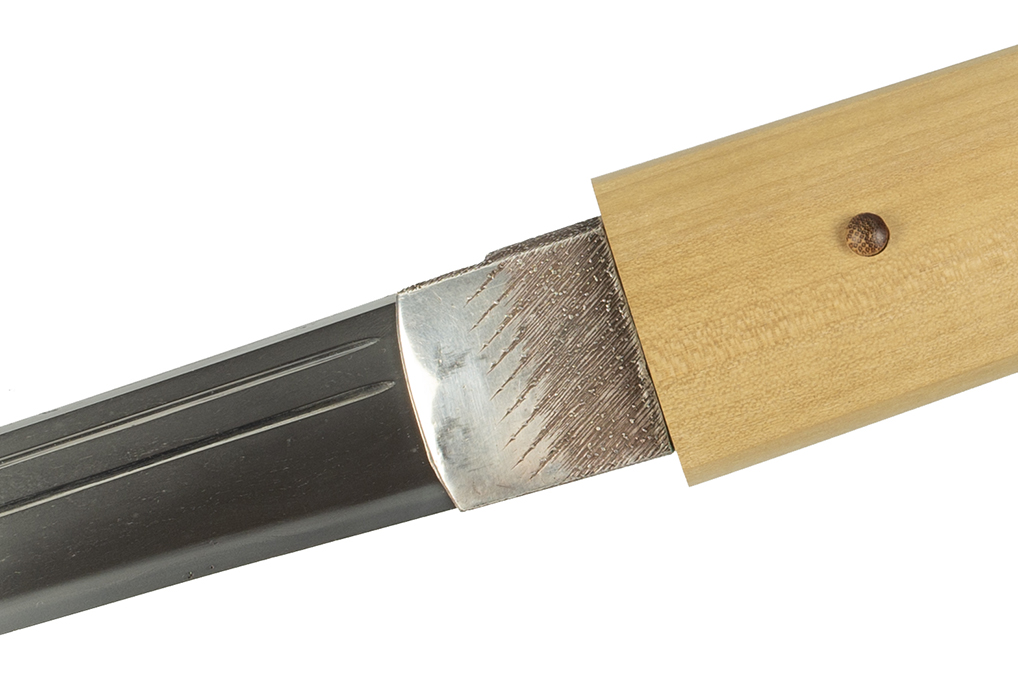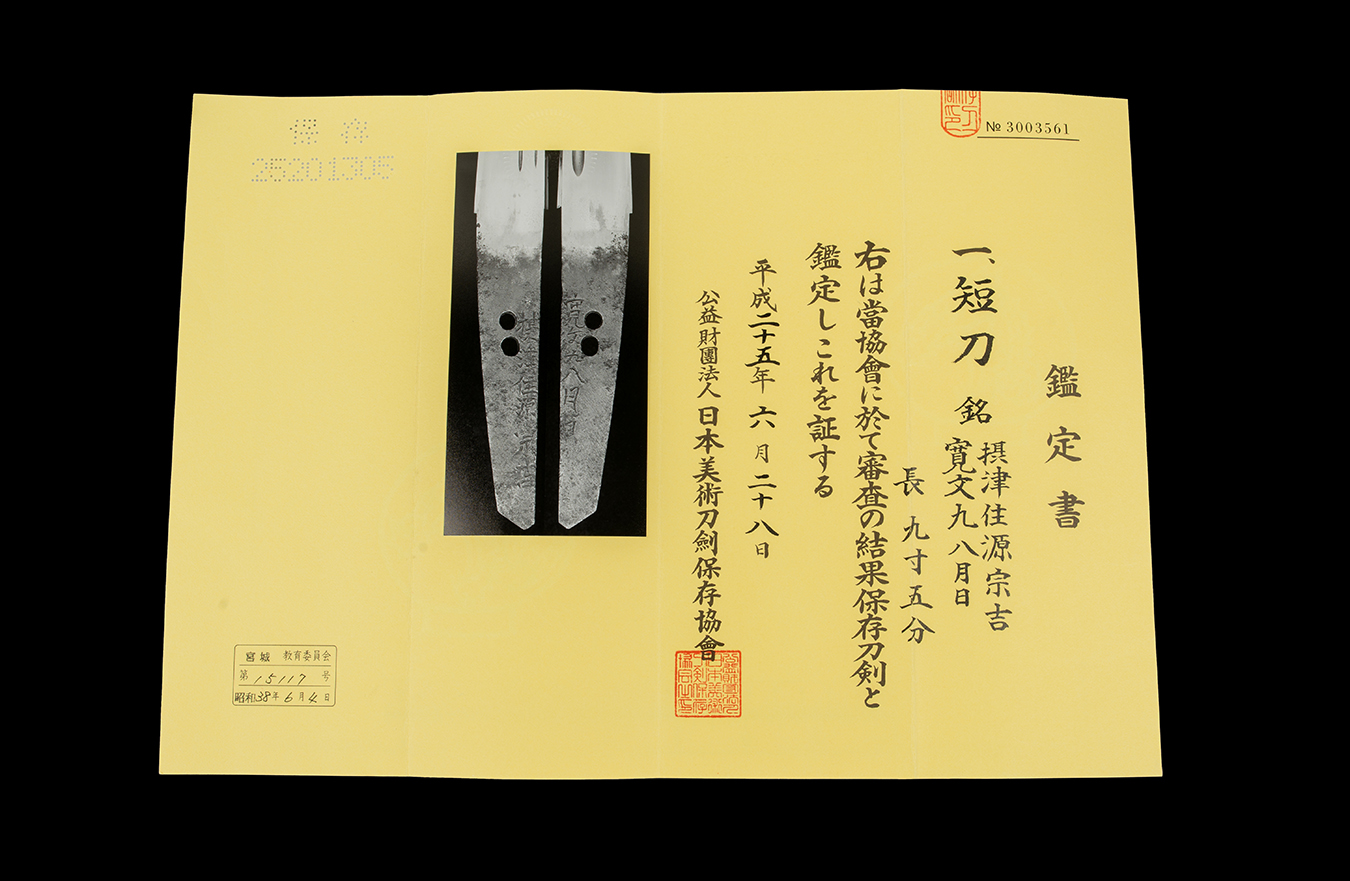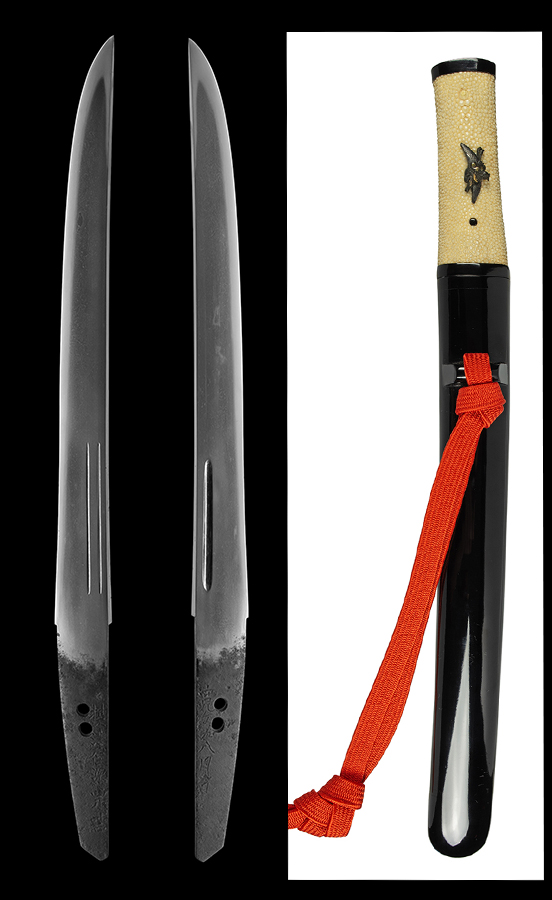|
| |||||||||||||||||||||||||||||||||||||
Hamon : Bright and clear hamon with nioi-deki suguha. Deep and soft nioi-guchi.
Boshi : Ko-maru with a long kaeri.
Kitae : Tight grained itame with utsuri.
About this sword : Muneyoshi worked in Osaka and was a student of Hitachi no Kami Muneshige. He was active around Kanbun times (1661-1673). There are not many remaining works by Muneyoshi and that makes this dated example rather important for preservation and study. The production date of Kanbun 9th year, eighth month is recorded on the ura 1669. Signed and dated Shinto era tanto are very rare, as most samurai were using the wakizashi.
This blade is in old polish and there is a spot of sumigane on the omote. Horimono of a standard bo-hi and gomaboshi (double hi) are engraved on both sides.
The accompanying koshirae is in excellent condition. The kozuka is in the theme of minogame and signed by Goto Taijo (there is a dent on the kozuka). The menuki are in the theme of minogame and heron (tsuru to kame) ridden by Jofuku and Muko.
Jofuku (in Chinese, Su Shi,) a Chinese wizard and physician, who was sent by the emperor, She Wang Ti, to find the elixir of everlasting life. She Wang Ti is the emperor who is credited with great cruelty, the building of the Great Wall, and the mass burning of books. Jofuku took with him three hundred Chinese couples and some of the most important Chinese books and never returned. This is interpreted by some to be the expedition that eventually became the Japanese people. Jofuku is sometimes represented as riding on a crane. (The menuki with the Chinese man riding the crane).
Muko, (in Chinese, Wu Kwang), the Chinese sage who, when his ruler was overthrown and the conqueror offered him the throne, refused and carrying a large stone went to a river and drowned himself instead. He is sometimes shown riding on the back of the minogame of Peng Lai Shan (Mount Horai), one of the three fortunate islands of Chinese legend.
There is a silver foil habaki and a shira-saya. There is a tsunagi for the koshirae. Both the shira-saya and koshirae have storage bags. Accompanied by a 2013 NBTHK Hozon paper.
$3900
SALE $3300


